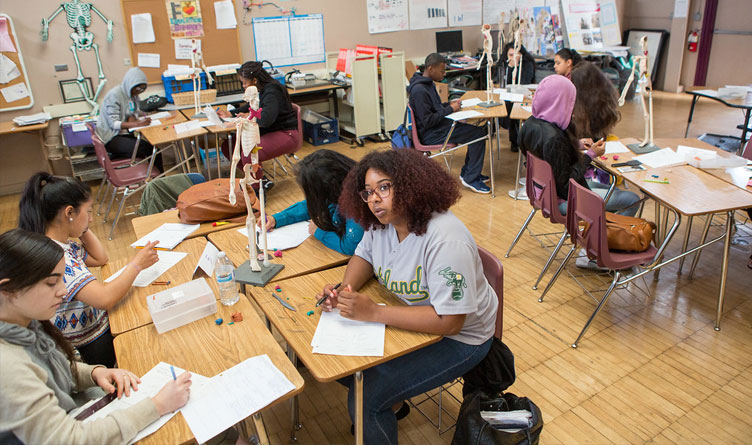Photo Credit: Photo by Allison Shelley/The Verbatim Agency for EDUimages / CC
Published August 16, 2021
By Jon Styf [The Center Square contributor] –
New data from the Tennessee Comptroller’s Office of Research and Education Accountability shows Tennessee public schools spent an average of $9,753 per student during the 2019-20 school year.
The comptroller data shows the Franklin Special School District had the highest per-pupil spending in the state at $15,582.19. Oak Ridge Schools was second at $13,041.51 per pupil, and Metro Nashville Public Schools was third at $12,374.33 per student. Union County Public Schools had the lowest spending per pupil at $7,935.77.
The U.S. Department of Education requires states to provide per-pupil spending numbers by school. To get the numbers, each school’s expenditures are added up along with the district-wide expenditures and then that number is divided by the number of students.
The comptroller’s office advises against drawing too many conclusions based on specific breakdowns of the data. That explanation was included in a legislative brief sent out to legislators in March related to the 2018-19 school year data.
***Click HERE to support Conservative Journalism in Tennessee. We can’t bring you articles about education in Tennessee without your support!***
“It is not advisable to isolate a single factor – such as the grade level, or the percent of economically disadvantaged students or English learners at a school – as the reason a district spent more per pupil compared to other schools,” the Office of Research and Education Accountability said. “For this reason, the (legislative) brief also discusses other data considerations to keep in mind when reviewing the data, such as the cost of educating students at special population schools, enrollment and grade span, student demographics (e.g., economically disadvantaged and English learner students), and building costs and utilities.”
The data also includes a tool to breakdown everything from the district’s demographics to the funding sources for each district. In Franklin, for example, there was $11,700 in school spending per student along with $3,883 in district expenses for 3,483 students. Funding was 71% local, 24% from the state and 5% coming from federal funding.
By comparison, Metro Nashville Public Schools schools were funded locally at 61%, 30% by the state and 9% through federal funds with $8,255 in school-based expenditures per student and $4,120 in district expenses for 81,923 students.
Shelby County Schools in Memphis spent $11,168 per student. It has 107,420 students. Of that, $6,784 was a school-level expense and $4,383 was a district-wide expense with 44% of funding coming from the state, 43% locally funded and 13% federally funded.
The one-school Alamo City School district in east Tennessee, meanwhile, was funded 82% by the state, 11% locally and 7% federally for its 575 students at a cost of $9,301 per student.
Student funding is distributed from the state through the state’s Basic Education Program (BEP) funding formula. Despite a 2.9% drop in enrollment statewide last year during the COVID-19 pandemic, the enrollment decline won’t affect state funding for schools after Gov. Bill Lee signed a bill to hold the schools harmless in the state funding formula for the 2021-22 school year.
Doing so will cost the state $8.9 million, according to the bill’s fiscal note.
“There will be some lasting effects to school populations into the future,” Sen. Jack Johnson, R-Franklin, said during discussions of the bill. “There are parents who pulled their kids out of public schools because of COVID or perhaps because the public school was closed and chose to home school them or, perhaps, put them in private schools.”
About the Author:

Jon Styf is a freelance writer for Tennessee and South Carolina.
Follow Jon on Twitter @JonStyf.






